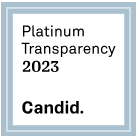Paper Plate Stories: Celebrating Six Victories to End Hunger
/As part of September’s Hunger Action Month, Hunger Advocacy Network member organizations across San Diego County collected stories from clients, volunteers, and community leaders about how hunger affects them and their communities. These people wrote their stories on paper plates to share with elected officials and the public how hunger impacts those in our community every day. These efforts are especially important as the California legislature makes its final decisions on legislation that would have a positive impact in reducing food insecurity.
Every year, the partner organizations of the Hunger Advocacy Network consider all the legislation proposed by the California Assembly and the Senate. We focus our advocacy efforts on initiatives that will make a lasting impact on reducing food insecurity in San Diego County.
Along with our statewide partners, including MAZON: A Jewish Response to Hunger, California Food Policy Associates, California Association of Food Banks, and the Western Center on Law and Poverty, the Hunger Advocacy Network continues to leverage the combined expertise of our 21 member organizations to advocate for policies in Sacramento that address the needs of San Diegans that go hungry. With the State legislative cycle drawing to a close, we have a lot of success to be proud of and plenty of momentum to continue our efforts.
Six Legislative Changes that will Reduce Local Hunger
The Farm to Food Bank Tax Credit (AB 1577): This credit helps reduce waste by encouraging farmers to donate excess fruits and vegetables to food banks to feed families throughout the county. Every dollar in credit leverages approximately 10 – 20 pounds of donated food. Along with our statewide partners, we were able to increase the credit to 15% and extend the program through 2022. Approximately 80% of the produce distributed by Feeding San Diego and San Diego Food Bank is the result of this important tax credit.
YES - This program was included in the State budget agreement that was signed by Governor Brown.
Food Assistance for Higher Education Students (AB 1747): As the cost for college rises, fewer working class families have the resources to support their children in securing a degree and there are increasing incidences of student hunger and homelessness. Proposed by local Assembly Member Shirley Weber, this legislation offers meaningful steps in supporting students struggling with food insecurity by establishing the Public Higher Education Pantry Assistance Program for supporting on-campus food pantries and hunger relief efforts for low-income students.
YES - Governor Brown signed this important legislation on September 12, 2016.
Market Match Nutrition Incentive Funding: The California Market Match program was launched in 2009 to encourage low-income families receiving nutrition benefits to purchase fresh, locally-grown fruits and vegetables at farmers’ markets. This program doubles the purchasing power of nutrition benefits, such as CalFresh and WIC when used to buy California grown fruits, nuts and vegetables at farmers’ markets. The California budget agreement that was approved by Governor Brown, includes an investment of $5 million dollars in this important program. This will allow the state to leverage $5 million in Federal matching funds resulting in at least $10 million for the expansion of local nutrition incentive programs.
YES - This funding was included in the California budget agreement approved by Governor Brown.
Streamlining CalFresh Eligibility (SB 1232): Low wage workers face significant barriers to participation in the CalFresh Program. Few have paid time off or reliable transportation to get to the county welfare department for the application process. According to the U.S. Department of Agriculture’s 2012 reporting, only 53 percent of eligible working families in California receive this federally funded food benefit. This legislation would ease the burden on families by requiring state and county agencies that administer the CalFresh Program to use existing employment and income verification databases to simplify the eligibility process for CalFresh applicants.
YES - Governor Brown approved this legislation on September 12, 2016.
Ensuring School Breakfast for Children: One in four kids in San Diego County arrive to school without breakfast. Numerous studies have shown that eating breakfast can bolster academic achievement, reduce absenteeism and tardiness, and improve classroom behavior. Breakfast After the Bell programs bring breakfast into the classroom, ensuring all children have the nutrition they need to succeed. Our own Robin McNulty provided critical testimony on the effectiveness of this program to the State Assembly Budget Subcommittee on Education Finance.
YES - Governor Brown approved $2 million in funding in the State budget for public schools that want to startup or expand after-the-bell breakfast programs.
Cost-of-Living Adjustment (COLA) for the State Supplementary Program for the Aged, Blind and Disabled (SSP) (AB 1584): The state supplementary program awards monthly grants to help prevent seniors and other disabled adults from living in poverty. This benefit provides income support to individuals who are aged 65 or older, blind or disabled. Starting in 2008, cuts made by the Legislature and the Governor reduced grants to individuals to amounts well below the federal poverty level. This bill would be an incremental step in lifting over 1 million California seniors and disabled adults out of poverty by re-establishing the automatic cost-of-living adjustment as a permanent component of SSI/SSP.
NO - Unfortunately, Governor Brown vetoed this full effort on September 25, 2016. However, along with advocates across the state we were successful in securing a small one-time increase to the SSI/SSP program in the State Budget Agreement.
Thanks to the efforts of advocates like you, we’ve been able to help inform our policy makers and generate real systemic change for San Diegans facing hunger. However, there is still more work to be done. Please join us in our efforts to ensure that all San Diegans have access to food at all times for a healthy future.
If you are interested in more information on how you can make a difference as an advocate, please contact Diane Wilkinson at the San Diego Hunger Coalition at diane@sdhunger.org or by calling 619-501-7917.






















